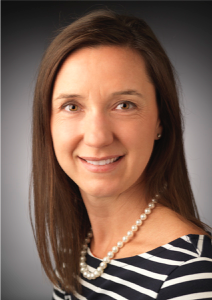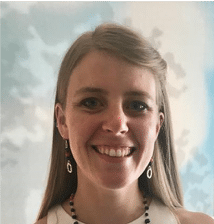By Abby Rolland, communications projects manager and Genevieve Shaker, Ph.D., associate professor of philanthropic studies, IU Lilly Family School of Philanthropy
Last year, corporations gave over $20.7 billion to nonprofits, an increase of eight percent since the year before (Giving USA 2018).Through gifts of cash and in-kind materials made through corporate-giving programs, as well as grants and gifts by corporate foundations and volunteering opportunities, corporations and their employees continue to engage in philanthropy. The idea of linking a corporation’s philanthropy with its business interests, often referred to as strategic philanthropy, began to take hold in U.S. companies during the 1980s.
There are tremendous opportunities for nonprofits and corporations to work together. They both need each other to be successful – nonprofits need donors, volunteers, and board members from the business community, while corporations need nonprofits as vehicles to partner with to give back to the community.
Corporation employees also benefit from opportunities for collaboration between nonprofits and corporations.
 “Being involved with nonprofit organizations and their developments encourages corporate employees to be more innovative, creative, and increase personal growth,” said Casey Ruschman, products and services manager for Indiana, Ohio, and Kentucky at Duke Energy Corporation and a current graduate student at the Lilly Family School of Philanthropy.
“Being involved with nonprofit organizations and their developments encourages corporate employees to be more innovative, creative, and increase personal growth,” said Casey Ruschman, products and services manager for Indiana, Ohio, and Kentucky at Duke Energy Corporation and a current graduate student at the Lilly Family School of Philanthropy.
Ruschman had a successful nine-year career in the accounting and finance department at Duke Energy in Cincinnati, Ohio when she reached a personal crossroads – stay in that department or work more with the community. When a position managing the Duke Energy Foundation opened, Ruschman saw the perfect opportunity to continue working for the company, while also engaging with communities in Ohio and Kentucky.
During her four years leading the foundation, Ruschman realized that she needed formal education about the philanthropic sector.
“I discovered that in order to do my job to the best of my ability, I needed more tools and better strategies on giving.” Those thoughts, as well as conversations with her boss, led Ruschman to look into online programs in philanthropy and nonprofit management. “This school and its graduate program really stood out to me,” she explained.
Ruschman’s commitment to furthering her education to enhance her knowledge of philanthropy led to her nomination for and acceptance of the Cincinnati Business Courier’s ’Forty under 40’ award.
“I want to be in a career that gives back to the community, and the Lilly Family School of Philanthropy helps practitioners be innovators and leaders who create positive and lasting change.”
Through her time as the Duke Energy Foundation manager, her current role managing the company’s low-income energy efficiency programs in three states, and her service on several nonprofit boards in Cincinnati, Ruschman has worked with nonprofits in multiple different capacities.
“There are many ways for nonprofits to engage and partner with corporations,” she said. Ruschman encourages nonprofits to look into various corporate giving and volunteering programs at corporations in their respective communities.
Key to making a strong first impression is doing your homework.
- Look into grants, scholarships, or in-kind product delivery that matches the nonprofit’s programs and goals with the corporation’s interests in the community.
“Research various ways that corporations directly give money to nonprofits,” Ruschman said.
- Determine whether a company has an employee volunteer program.
“We have an internal program where we can see volunteering opportunities in the Greater Cincinnati area. Employees are then able to sign up for these various opportunities during their free time,” she said. “If I’m passionate about a cause, I can get a group of coworkers together and form a volunteer event at a local nonprofit. It’s a great way for employees to participate in established volunteering events or start their own,” she explained.
- Research matching gift programs.
“Matching gift opportunities provide ways for nonprofits to leverage more dollars. The Duke Energy Foundation will match $1 for $1 up to $5,000 per year for each employee donation to any nonprofit organization,” she said.
- Research and then ask corporations about other ways they and their employees can give back to the community.
“My company has a program that allows me to track my nonprofit board service or volunteer hours in an internal system where those hours equate to dollars. Then, I receive up to $2,000 a year for volunteer work that I can give back to any nonprofit,” she explained.
“Corporations in the U.S. have a large role in philanthropy. For example, Duke Energy works in seven states, and the Duke Energy Foundation annually provides over $30 million in charitable giving. The company strongly promotes community involvement and giving back,” she said.
“Giving back to local communities gives corporations as a whole a way to create a more positive workplace environment, boost employee engagement, garner positive media coverage, and attract and retain investors.”
Are company employees more likely to participate in philanthropic activities if the corporation promotes charitable giving? Genevieve Shaker, Ph.D., associate professor of philanthropic studies, researches and analyzes workplace-giving campaigns and has found that to be the case.
A research study conducted by Shaker, Dr. Robert Christensen, and Jonathan Bergdoll (2017) found that employer-matching programs encourage giving by employees.
“When employers matched donations, workers appeared more likely to give and to give more money to a cause. About eight percent more people said they donated when they worked for companies that offer this benefit, compared to employees of companies that don’t,” Shaker and colleagues wrote.
“It’s clear that employees at corporations want to give back in some capacity,” she added. “It’s important for nonprofits to ask about these opportunities with their donors, and for corporations to make clear with their employees that user-friendly matching gift opportunities exist,” she finished.
Ruschman agrees, and she encourages nonprofits to focus on mission when discussing matching gifts and other corporative giving and volunteering opportunities with companies.
“Nonprofits that are clear about their mission and their impact in the community are ones that stand out to us. They understand the needs of the community and have concrete solutions, and they partner with other nonprofits, community leaders, government, corporations, and volunteers to achieve their mission,” Ruschman explained.
Ruschman’s advice for nonprofits when working with a corporation
- It’s critical for nonprofits to research a corporation’s giving strategies before making contact in order to understand if they are eligible to secure funding. Make a list of the nonprofit’s community partners, philanthropic support, financials, and other volunteering opportunities.
- Create a plan focused on a program or project that would match the corporation’s ideals and outcomes. The nonprofit should have two or three ideas on ways the corporation can support its work.
- Meet with the corporation staff person via phone or in-person to discuss the potential relationship.
For Ruschman, her desire to give back has resulted in a career that merged her two passions of business and community service.
“Being a worker and citizen that cares about giving back plays an important role in the culture of a company. I am fortunate to work for a company that is committed to community and service. Personally, my career will always focus on helping people and giving back to better society,” she said.



